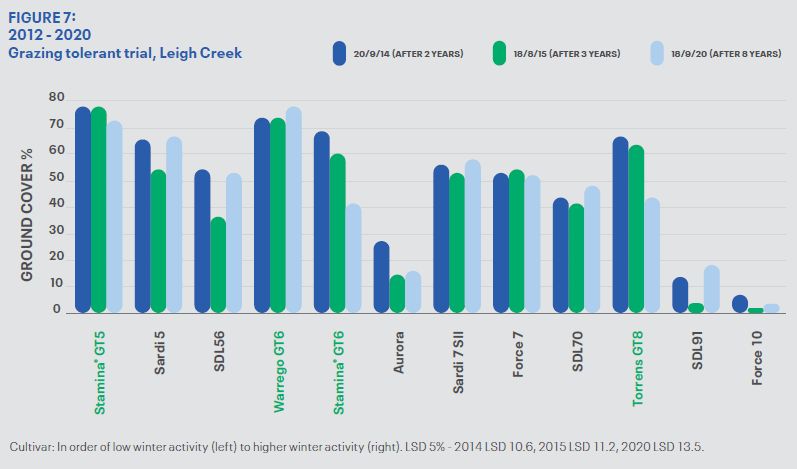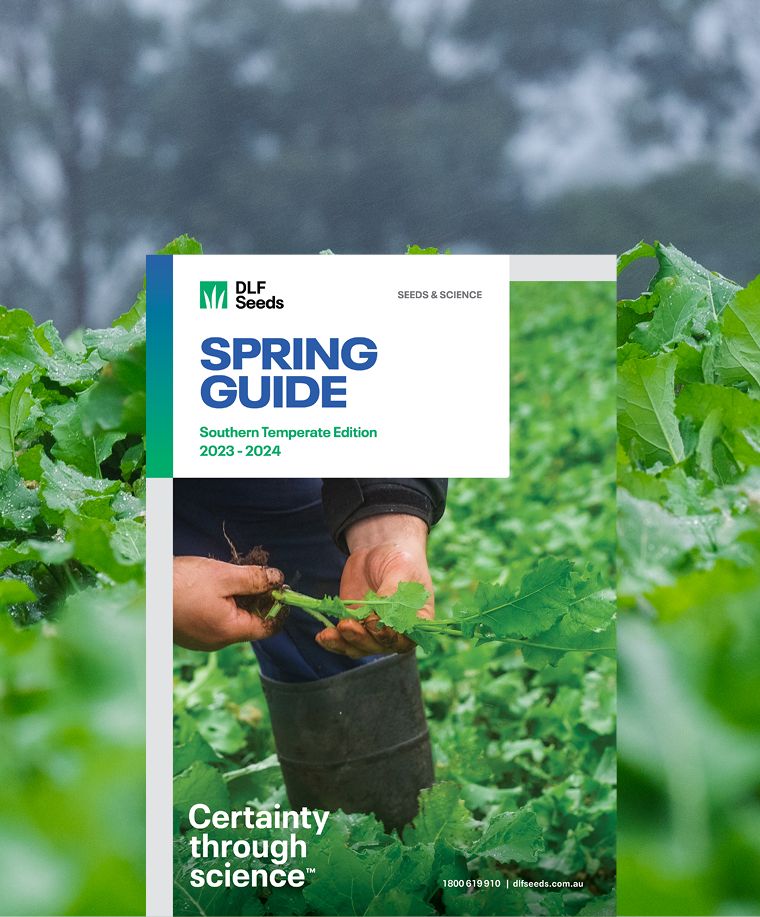Get in Touch
Contact Us
National team

Find Your Local Sales Agronomist
Torrens GT8 (of the Stamina® range) is the first grazing tolerant highly winter active lucerne to be released to the Australian market. This product was selected from highly winter active survivors in grazing tolerance trials at Leigh Creek (VIC) and Gundagai (NSW). With a high leaf to stem ratio and fine stems, it produces high quality forage for premium hay production or grazing.
Sowing rate (sole): 5-25kg/ha
Sowing rate (mixed): 2-8kg/ha

Torrens GT8 was selected from highly winter active survivors in grazing tolerance trials at Leigh Creek (Victoria) and Gundagai (NSW).
Developing grazing tolerant lucernes for Australia’s dryland farms has taken nearly two decades and was a collaboration between PGG Wrightson Seeds and Alforex in the USA. Screening was conducted in Australia by PGG Wrightson Seeds who evaluated 24 advanced lines in trials that ran for 7 years. Plots were grazed for two 10 month periods at a stocking rate of 40 sheep/ha equivalent.
The original Stamina lucerne varieties were selected as ‘best of the best’ in these ultra-rigorous evaluations. As a result of this, the highly winter active survivors were then re-selected from and tested under another grazing tolerance trial from 2011-2014 in Ballarat.
Identify an area to plant lucerne a minimum of 6 months prior to sowing. Correct paddock selection is a key driver for long term lucerne stand persistence. Lucerne will grow on a variety of soils, but does best on deep, well-drained soils of medium to light texture.
Rich alluvial soils are ideal, but lucerne also thrives on most of the red earths, red-brown earths, and well-drained black and grey soils found throughout the cropping zone. Established lucerne tolerates saline soils moderately well, but seedlings are less tolerant.
Lucerne requires highly fertile slightly acidic soils, soil testing at least 12 months in advance allows enough time for deficiencies to be identified and fixed. Understanding the limitations of lucerne is important: factors such as low pH, Aluminiun and where it is within the soil profile will determine if the paddock is suitable for sowing lucerne.
Seedbed preparation
Preparing the seed bed takes into consideration the soil type and cultivation of the soil to ensure the soil is fine. This will aid the soil to seed contact at the time of sowing as well as good supporting moisture infiltration around the seed either after a rainfall event or irrigation. Poor weed control is one of the most common issues that can lead to poor lucerne establishment.
Weed control must start the year prior to sowing the lucerne to ensure adequate time and opportunity to control any weeds that are present in the paddock. This should also reduce the need for post emergent herbicides to be used in the young lucerne crop as this can retard growth.
The sowing depth needs to be managed as lucerne is a small seed and therefore only needs to be sown at no more the 15mm deep. This will enable the lucerne to germinate and the seedling to rise above the soil to begin photosynthesis. Correct paddock selection is a key driver for long term lucerne stand persistence.
First grazing/cutting: Allow the lucerne to reach a minimum of 50% flowering (50% of the tallest stems have a flower) prior to the first grazing/cutting, If the stand is weedy at establishment it can be grazed/cut once if it is 15-20 cm tall and then left to flower a minimum of 50%
Spring - Seasonal management (focus on Stock performance)
Summer – Focus on stock performance
Autumn – Focus on lucerne
Winter – Focus on management
Minimum 350mm rainfall per annum unless irrigated
 2024 Product Guide.jpg&Format=jpg&Width=800&Compression=80&Crop=5&DoNotUpscale=True)

